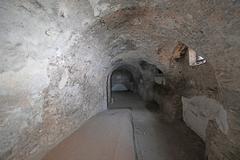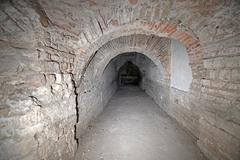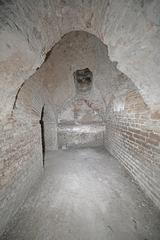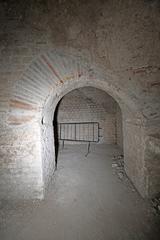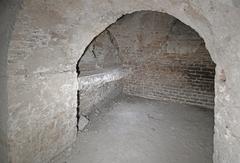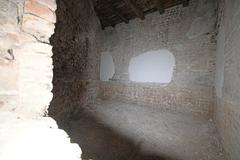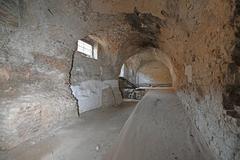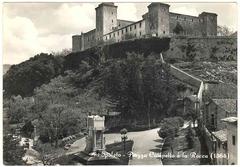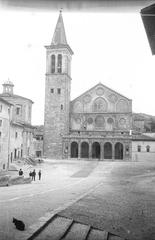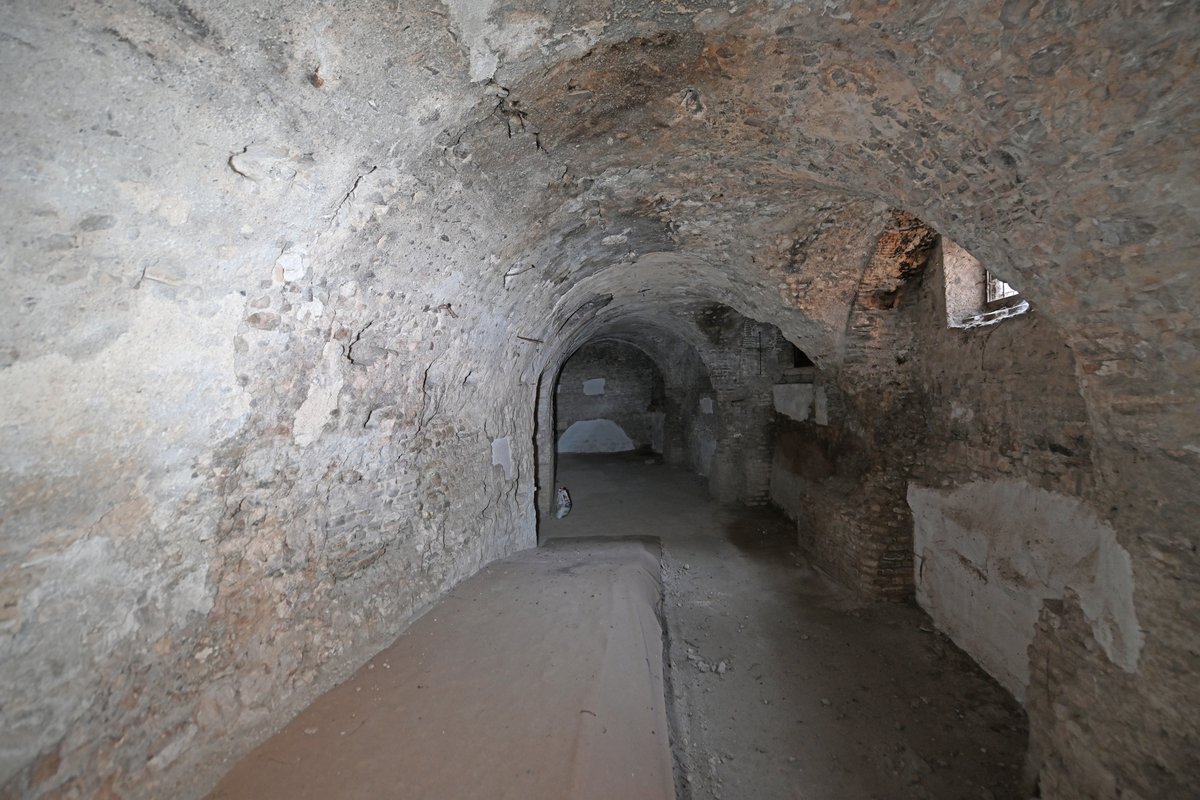
Anfiteatro Romano di Spoleto: Visiting Hours, Tickets, and Historical Sites in Spoleto
Date: 14/06/2025
Introduction
Discover the Anfiteatro Romano di Spoleto—a monumental Roman amphitheater nestled in the heart of Umbria, Italy. This comprehensive guide consolidates essential information about the amphitheater’s history, architectural features, visiting hours, ticketing, accessibility, and nearby attractions. Whether you are a history enthusiast or a traveler seeking a unique cultural experience, the Anfiteatro Romano di Spoleto offers an immersive journey through centuries of urban evolution and heritage.
Contents
- Introduction
- History and Evolution
- Architectural Features and Current Condition
- Visiting Information
- Hours & Tickets
- Access & Accessibility
- Travel Tips
- Events and Cultural Activities
- Nearby Attractions
- Preservation and Restoration
- FAQs
- Visual Resources
- Conclusion
- Sources
History and Evolution
Roman Origins
The Anfiteatro Romano di Spoleto was constructed between the 1st and 2nd centuries AD, symbolizing the city’s prominence within the Roman Empire. Designed with an elliptical plan, the amphitheater was built using opus vittatum (alternating stone and brick layers), with two superimposed orders and an estimated spectator capacity of up to 30,000 (I Luoghi del Silenzio). It hosted gladiatorial games, animal hunts, and public spectacles, serving as a focal point for civic and social life (Exploring Umbria).
Medieval Transformations
After Emperor Honorius banned gladiatorial contests in 404 CE and with the decline of the Roman Empire, the amphitheater fell into disuse. During the Gothic War in 545 CE, King Totila repurposed it as a fortress, closing corridors for defense (Wikipedia). Under Lombard rule, it became a military base, and by the 12th century, its arcades were converted into merchant shops and religious buildings, including the Church of San Gregorio Minore.
Modern Era and Rediscovery
In the Renaissance, stones from the amphitheater were reused to construct the Rocca Albornoziana fortress. The site was later neglected due to military use, and only in the 19th and 20th centuries did archaeological efforts, led by Giuseppe Sordini, reveal much of the structure visible today. Ongoing restoration now seeks to balance preservation with public access (Umbria Tourism).
Architectural Features and Current Condition
The amphitheater’s elliptical arena, measuring approximately 115 by 84 meters, is surrounded by the remains of its cavea (tiered seating). The structure’s 64 arcaded ambulacra originally opened toward the countryside and were built for both durability and visual appeal. While much of the superstructure has been lost, visitors can still see substantial masonry, lower corridors, and traces of medieval adaptations (Visit Sights).
The site is now part of a larger monumental complex, including:
- Cloisters and courtyards
- The former Churches of Saints Stefano & Tommaso and San Gregorio Minore
- Gardens and archaeological areas
Visiting Information
Hours & Tickets
- Opening Hours: Generally open daily from 9:00 AM to 7:00 PM (with last entry around 6:30 PM). Hours may be extended during summer and the Festival dei Due Mondi. Always check the official tourism website for updates.
- Tickets: Standard admission is typically €8 for adults. Discounted rates are available for EU citizens under 25 and seniors, while children under 18 often enjoy free entry. Entry is included in the Spoleto Card, which grants access to multiple sites.
- Where to Buy: Tickets can be purchased on-site or online via the official tourism portal.
Access & Accessibility
- Location: Northern part of Spoleto’s historic center, near the Tessino stream. Accessible from Via Sant’Agata and within walking distance of other major attractions.
- Accessibility: The site has uneven terrain and ancient steps; some areas are accessible via ramps, but not all sections are wheelchair-friendly. Visitors with mobility challenges should contact the site in advance for assistance.
- Facilities: Public restrooms, cafes, and souvenir shops are available nearby.
Travel Tips
- Visit in the early morning or late afternoon for fewer crowds and optimal lighting.
- Comfortable footwear is recommended due to cobblestone streets and uneven surfaces.
- Combine your visit with other nearby sites using the Spoleto Card for convenience and savings.
Events and Cultural Activities
The Anfiteatro Romano di Spoleto retains its role as a cultural hub. While the Roman Theatre hosts most large performances, the amphitheater occasionally features smaller-scale events, guided tours, and art installations, especially during the Festival dei Due Mondi. These activities link Spoleto’s ancient heritage to contemporary artistic life.
Nearby Attractions
Enhance your visit by exploring:
- Rocca Albornoziana: A formidable fortress with panoramic city views.
- Duomo di Spoleto (Cathedral of Santa Maria Assunta): Renowned for its Romanesque façade and frescoes.
- Roman Theatre: A well-preserved performance venue still in use.
- Arch of Drusus: An ancient Roman gateway.
- Roman House (Casa Romana): Notable for its mosaics and architecture.
All are accessible within Spoleto’s pedestrian-friendly historic center and offer further insight into the city’s layered past (Visit Italy).
Preservation and Restoration
The amphitheater has undergone significant archaeological work since the late 19th century. Recent restoration efforts, supported by Italy’s National Recovery and Resilience Plan (PNRR), focus on seismic reinforcement, sustainable site management, and improving accessibility (ANSA Umbria). These initiatives ensure the monument’s longevity and integration into Spoleto’s cultural life.
Frequently Asked Questions (FAQ)
What are the opening hours?
Typically 9:00 AM–7:00 PM, with possible seasonal variations. Always confirm via official channels.
Are tickets required?
Yes, unless visiting during a free special event. Tickets are available on-site or via the official website and may be included in the Spoleto Card.
Is the site accessible for visitors with disabilities?
Accessibility is limited; contact the site beforehand for specific information.
Are guided tours available?
Yes, especially during festivals or by arrangement with local guides.
Can I take photographs?
Photography is permitted, though flash and tripods may be restricted during performances.
Visual Resources
- High-quality images of the amphitheater’s external arches and interior seating are recommended for capturing its grandeur.
- Interactive map of Spoleto and the amphitheater location.
- Virtual tours and multimedia resources may be available via the official tourism websites.
Conclusion
The Anfiteatro Romano di Spoleto stands as an enduring symbol of the city’s layered history, from Roman grandeur to medieval adaptation and modern cultural renewal. Ongoing restoration and thoughtful programming ensure that this ancient venue remains accessible and meaningful for visitors today. Whether exploring its evocative ruins, attending a festival event, or delving into Spoleto’s broader tapestry of Roman and medieval sites, the amphitheater offers a memorable experience at the crossroads of past and present.
For the latest visiting hours, ticket information, and cultural events, consult the official tourism website and consider downloading the Audiala app for real-time updates, guided tours, and curated travel content.
